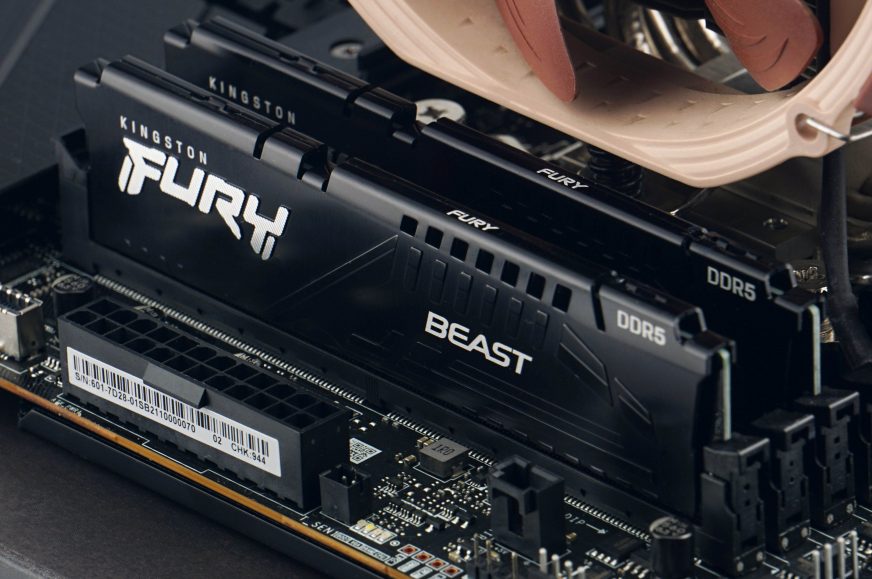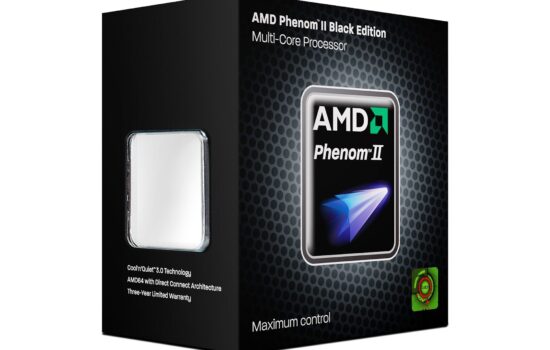ASRock, Gigabyte and MSI announce support for 64GB DDR5 modules on LGA 1700 and AM5 platforms
Early this year DDR5 memory modules got capacity boost when 24GB and 48GB modules hit the market. These were based on 24Gb chips. However, it looks like another leap is coming and 64GB modules could soon be on the market, allowing up to 256GB of RAM to be installed into regular desktop PCs, or 128GB for laptops or Mini-ITX boards. Board manufacturers are already gearing up support, hopefully this time there won’t be compatibility issues.
We reported on DRAM manufacturers readying DDR5 chips with a capacity of 32 Gb (4 GB) some time ago. Such DRAM dies were announced by Samsung (which was supposed to start producing them before the end of the year) and Micron, which has them in its roadmap for 2024, has also made such announcement.
Conventional PC modules (unbuffered / non-registered DIMMs), use either 8 or 16 DRAM chips (you need to use RDIMM technology to pack more on one module). This means that with 32Gb (4GB) chips, memory manufacturers will be able to offer 32GB single-rank DIMMs and also 64GB dual-rank modules (modules with double-sided PCBs with 16 DRAM chips).
It was unclear how long it would take for such modules to reach the market, but apparently this is coming soon enough. In fact, board manufacturers have already started announcing support for these modules in their board BIOSes. This comes with support for higher maximum memory capacities for the platforms in question. Boards with four slots (which is most desktop platforms with dual-channel controllers) will hereby support 256 GB of RAM (if they use DDR5 memory, that is). For Mini-ITX boards or other PCs that only have two memory slots, the maximum RAM goes up from 96 GB to 128 GB thanks to this.
Support on ASRock and MSI motherboards
ASRock and MSI were among the first to announce support for up to 256GB RAM and 64GB DDR5 modules. The good news for AMD platform users is that while 24GB and 48GB modules initially refused to work and took a while to get supported by BIOS updates, in this case the new modules should be supported right from the start. ASRock announces that 64GB modules / 256GB RAM is supported on its AM5 platform boards and Intel LGA 1700 platform boards with 700 series chipsets. Also, MSI has announced support on (among other things) the MSI Pro X670-P WiFi board.
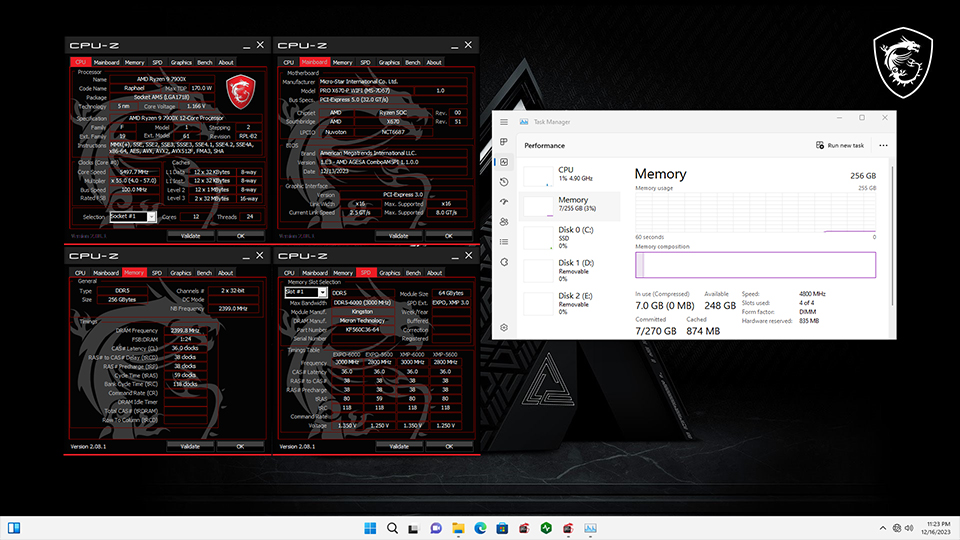
The first or one of the first 64GB memory modules appearing on market could be the Kingston Fury Renegade kit, consisting of four 64GB modules. Its code is KF560C36-64, which should run on DDR5-6000 CL36-38-38 timings, with a voltage of 1.35V (with the EXPO or XMP profile).
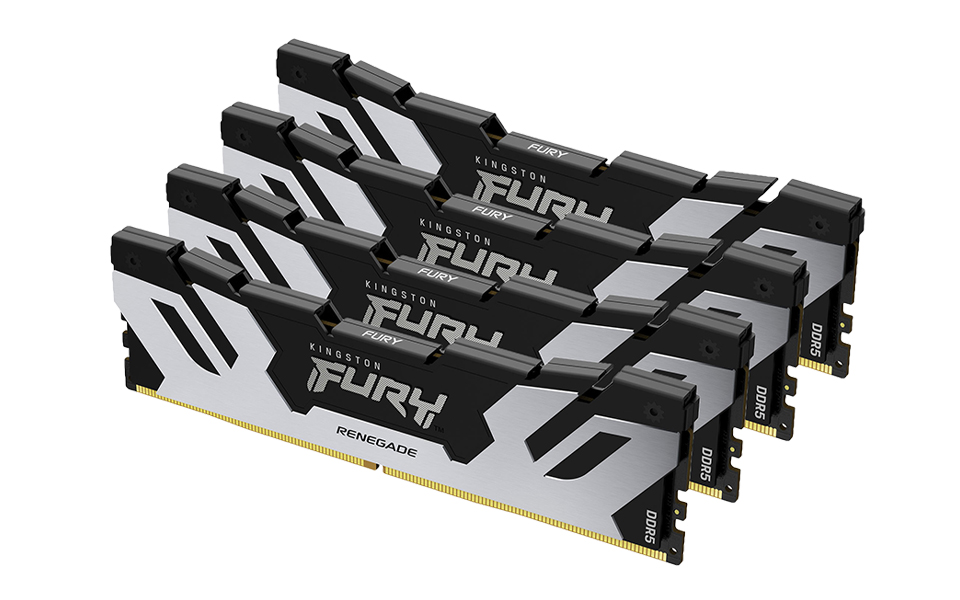
MSI has shown a validation of the modules in question with the Ryzen 9 7900X processor and reveals that they are based on DRAM chips from Micron (actually, this is also visible in the CPU-Z screenshots). Kingston doesn’t have the 64GB version of these modules listed on their website yet and we don’t know when exactly they will start selling them. When we consider the context of the announcements of support on the motherboards, though, we can probably expect that it could be in a matter of weeks rather than months.
ASRock, for a change, showed validation of the 256GB of RAM using probably the same 64GB modules on the Z790 Nova WiFi and X670E-Taichi boards. Here it is worth noting that the second one was equipped with the Ryzen 7 8700G processor, i.e. the still unreleased Phoenix desktop APU (or more precisely, it should be a part of the coming refresh codenamed Hawk Point). Support will therefore also be available for these processors.
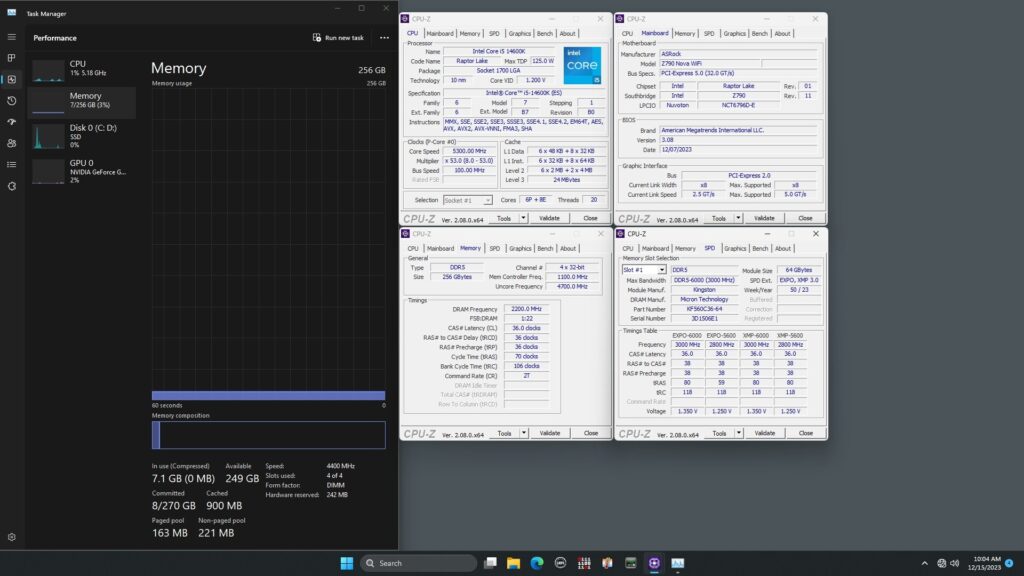
Updated: Gigabyte and B650
Gigabyte has already made an announcement confirming 64GB module support. Again it is announced for Intel boards, where validation on the Z790 platform (600 series boards are also said to be getting support, however) was shown for illustration, as well as for AMD. In this case, Gigabyte was showing 256GB of RAM with a Ryzen 9 7900X3D and on a board with a B650 chipset. So support won’t be limited to the X670 (if you doubted that).
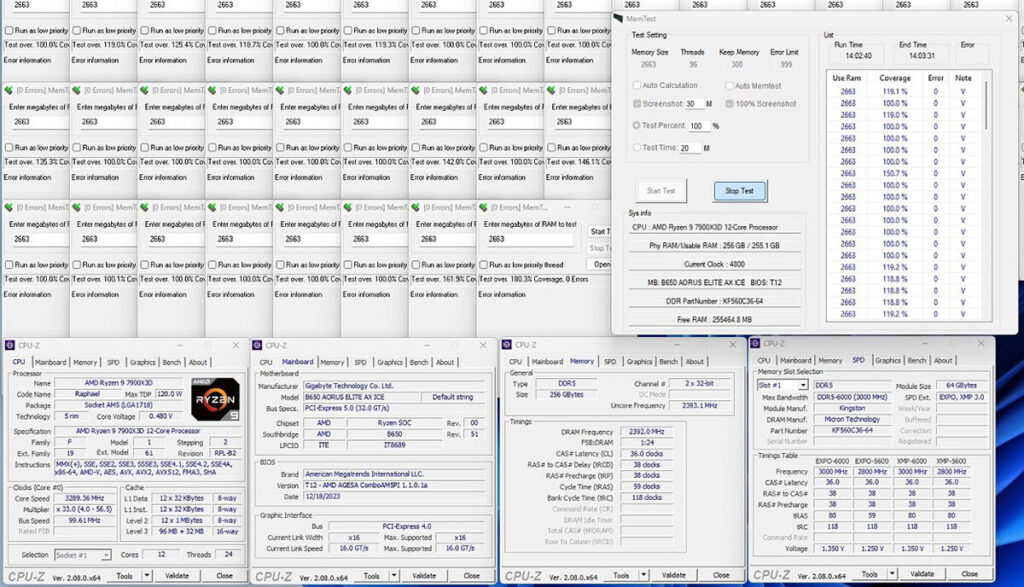
Once again, the availability of these DIMM capacities will push the capabilities of the PC platform a step further, although you will of course have to pay a relatively high purchase price for this high capacity. These modules will naturally work not just in the boards of the manufacturers mentioned. We expect other brands will surely add support as well (they might even already have it, just not making a specific announcement yet).
Source: Tom’s Hardware, MSI, TechPowerUp
English translation and edit by Jozef Dudáš
⠀
- Contents
- ASRock, Gigabyte and MSI announce support for 64GB DDR5 modules on LGA 1700 and AM5 platforms





